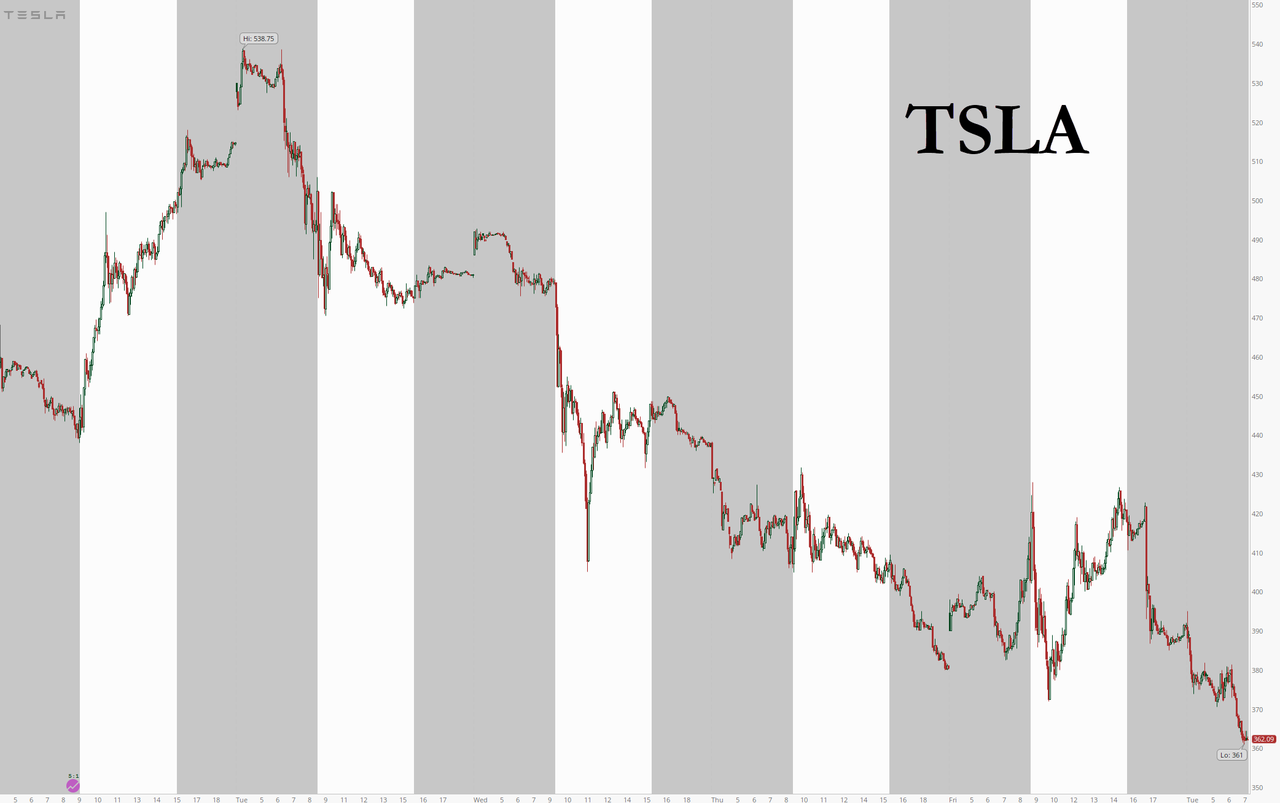Tesla Crashes 12% On S&P Snub While Analysts Question Profitability, Demand And Liquidity
Tyler Durden
Tue, 09/08/2020 – 08:09
An entire generation of Gen-Z Tesla traders on Robinhood who have only learned how to hammer the “buy” button, is getting their first cold reality check as the EV maker’s stock is down over 12% pre-market, one of its biggest drops since the March crash, on the heels of the company snub for inclusion into the S&P 500 after hours on Friday. Tesla bulls, pundits and sell side analysts alike had widely expected the company to be added to the index following four quarters of fake and engineered “profitability.” Instead, S&P wound up adding Teradyne, Catalent and… Etsy?
There is speculation that Tesla’s snub may have something to do with “questions about the automaker’s ‘profitability metrics’ and murky full-year forecast,” Dan Ives from Wedbush commented on Friday, doing damage control from a $700 price target he had put on Tesla shares just days earlier.
Gordon Johnson of GLJ Research speculated on Tuesday morning that Tesla was not included due to cash problems, demand problems and China problems. He commented:
- CASH PROBLEM(S): TSLA completed the entire $5bn at-the-market equity issuance this past Friday (i.e., in less than one week, and before market participants knew about S&P 500 exclusion), which many TSLA pundits (incl. us) thought would take 1-to-2 quarters, showing the company desperately needs cash right now (our opinion – a business that perpetually loses money, yet can raise money, is not a sustainable business; E. Musk said in 1Q19 that TSLA would be profitable in all quarters going forward and never need to raise capital again; a month after making this statement, TSLA posted a loss of $700mn; and, since then, TSLA has raised an aggregate ~$10bn in capital, including the at-the-market equity issuance announced last week; in fact, just last earnings report, ~1 month ago, TSLA said it believed it could self-fund growth, from operations, moving forward; yet, last week, roughly a month later, TSLA announced a $5bn capital raise, which it completed in LESS THAN ONE WEEK).
- DEMAND PROBLEM(S): TSLA’s guidance for 2020 sales of ~500K cars is only equal to ~63% of year-end 2020 capacity (any other automaker operating at this level of capacity would likely quickly go bankrupt) – second figure below; however, TSLA is planning TWO NEW FACTORIES IN THE USA and Germany that will add another 700K-to-1,000K in additional car capacity vs. that expected at year-end 2020 (keep in mind TSLA got ~$1bn in tax-payer money to build its solar plant in Buffalo, yet has fallen FAR short of expectations there [i.e., there is an example of TSLA building a plant, only to materially fail expectations – see first figure below]); stated differently, global demand for TSLA cars is currently insufficient to meet the company’s existing capacity… and this is BEFORE a massive expansion of capacity currently underway at TSLA.
- CHINA PROBLEM(S): Based on CPCA data released last night, TSLA sold just 11.8K cars sold in China in Aug. 2020, yet produced 12.7K cars, once again seeing sales fall short of production (suggesting the company is operating at just over 50% of its ~20K car/month Shanghai plant capacity); that’s not good, and TSLA fell from it’s #’r 1 ranking in China to #’r 3, losing significant market share to both GM (China new comer, and #’r 1 in sales right out the gate) and BYD.
In Tuesday morning’s note, Johnson also brought up the company’s undefined accounts receivable balance in excess of $1.4bn and its large stock-based comp expenses in 3Q20, pushing bottom line to net income losses.
Regardless, the stock still remains up more than 300% this year.
via ZeroHedge News https://ift.tt/2F8467S Tyler Durden
